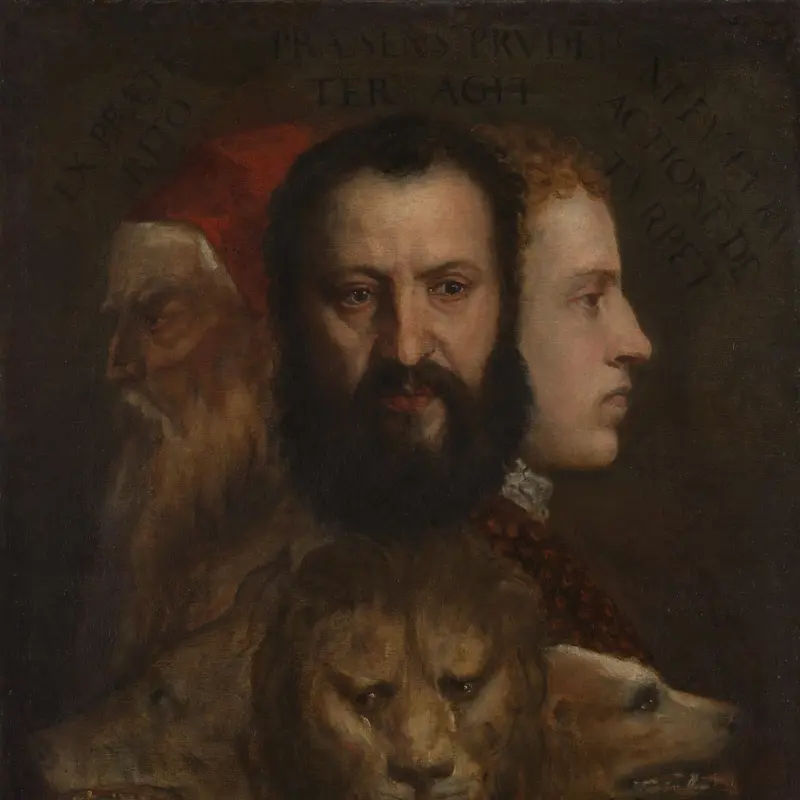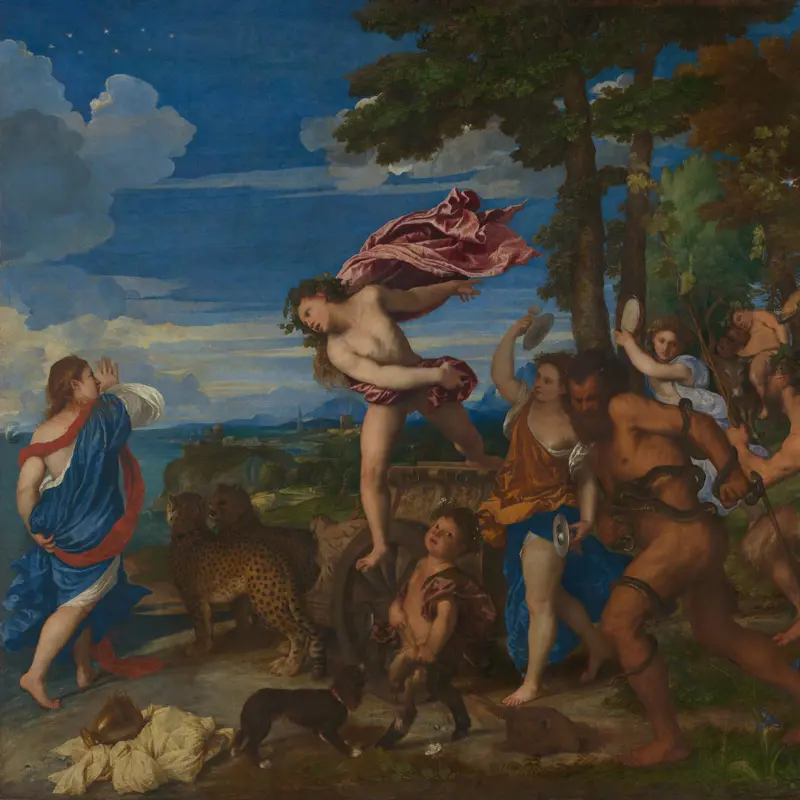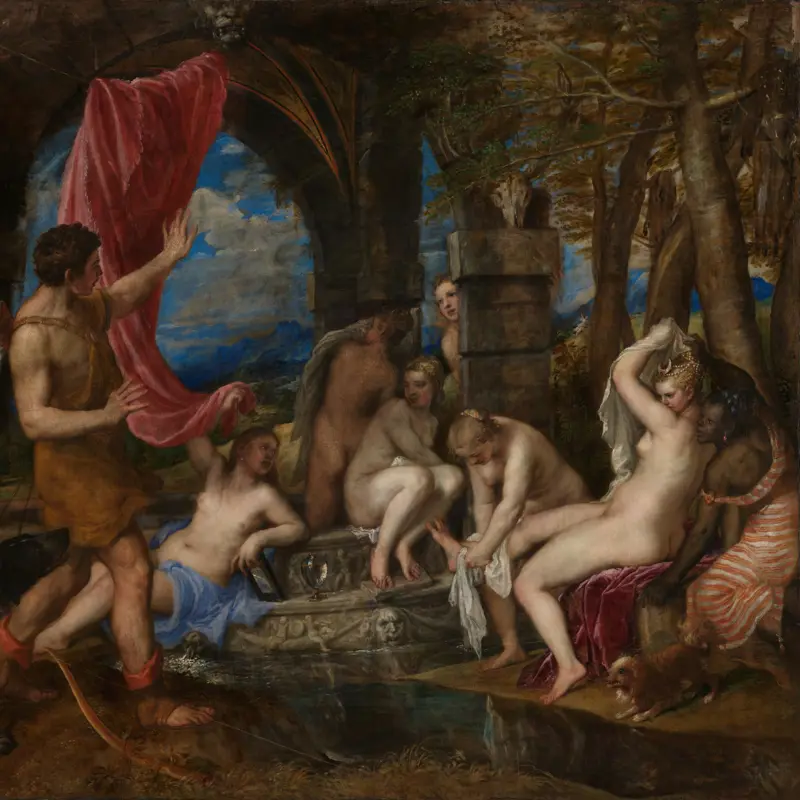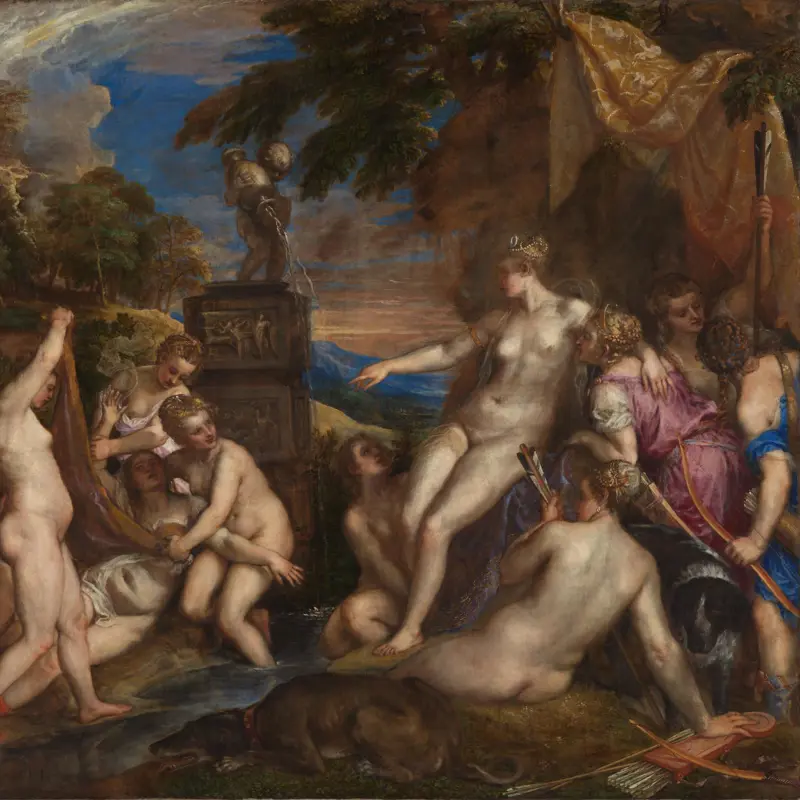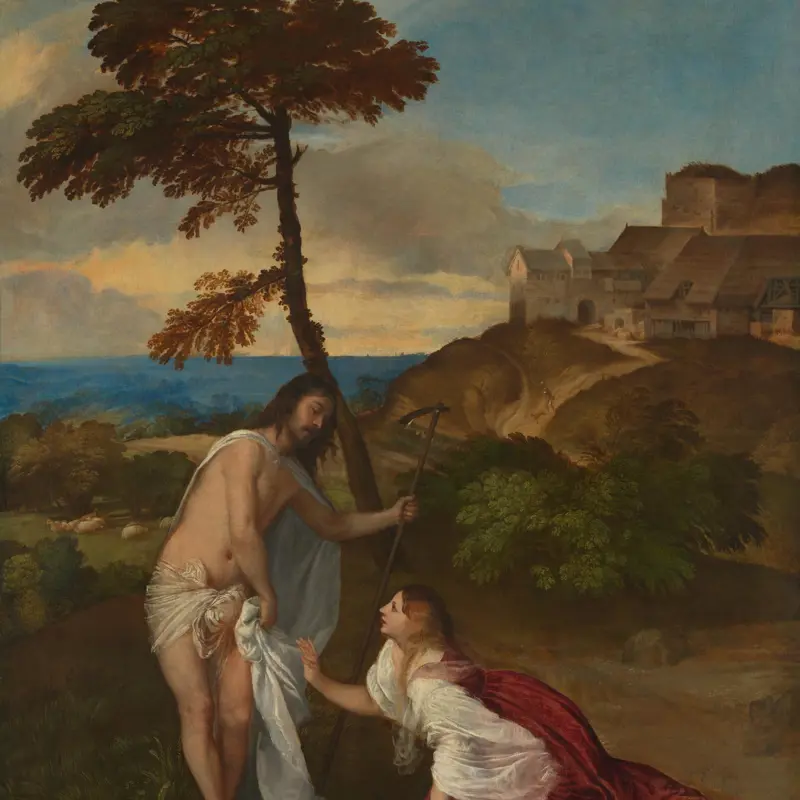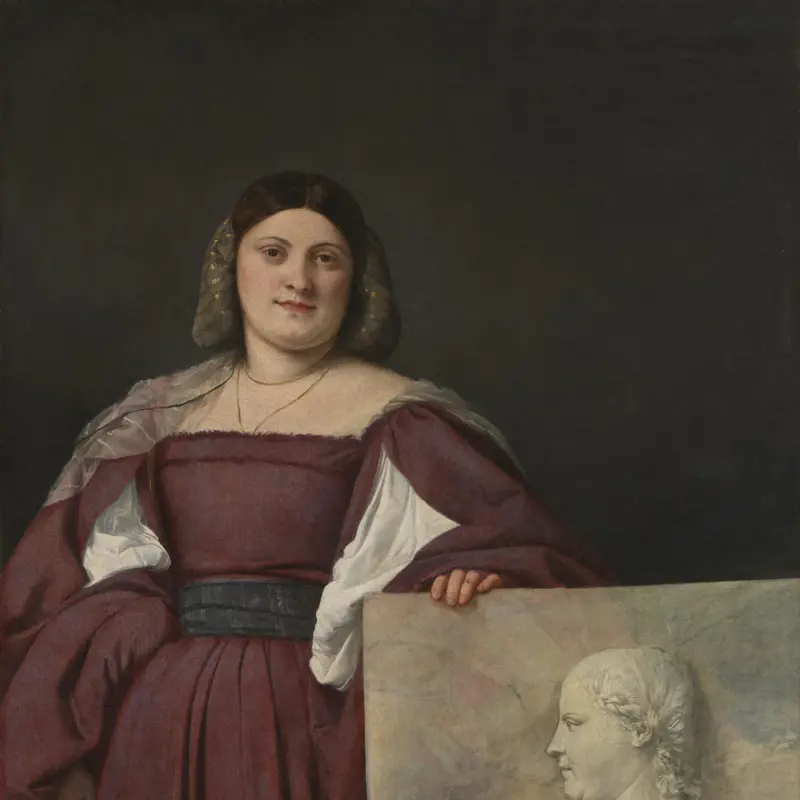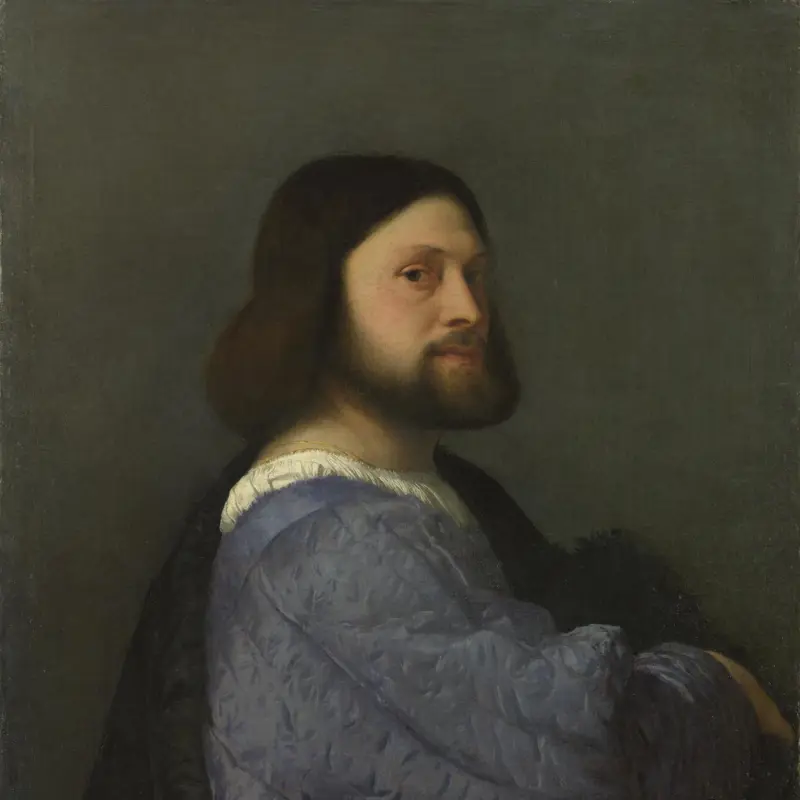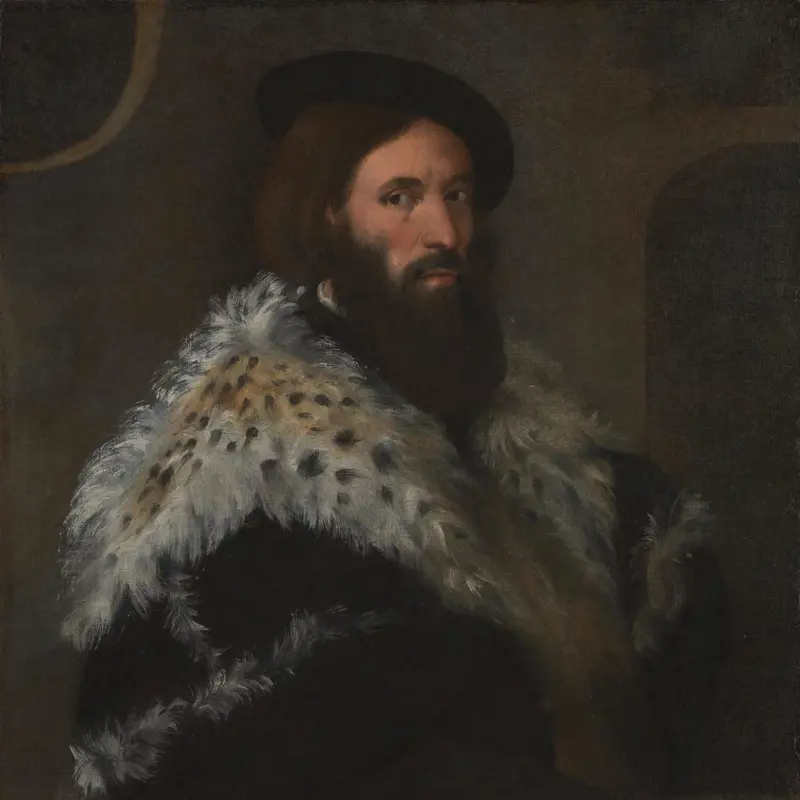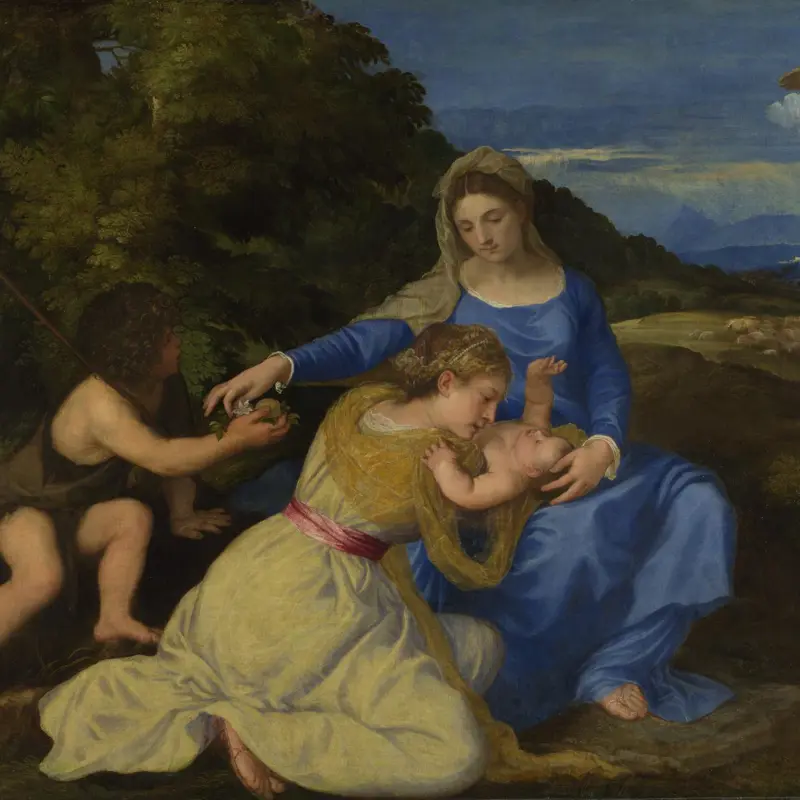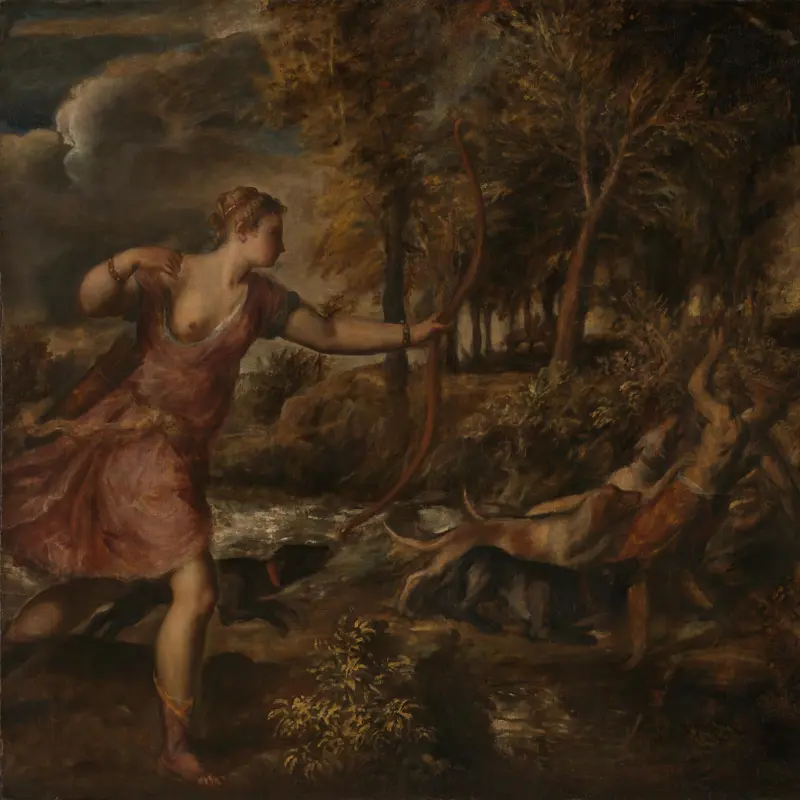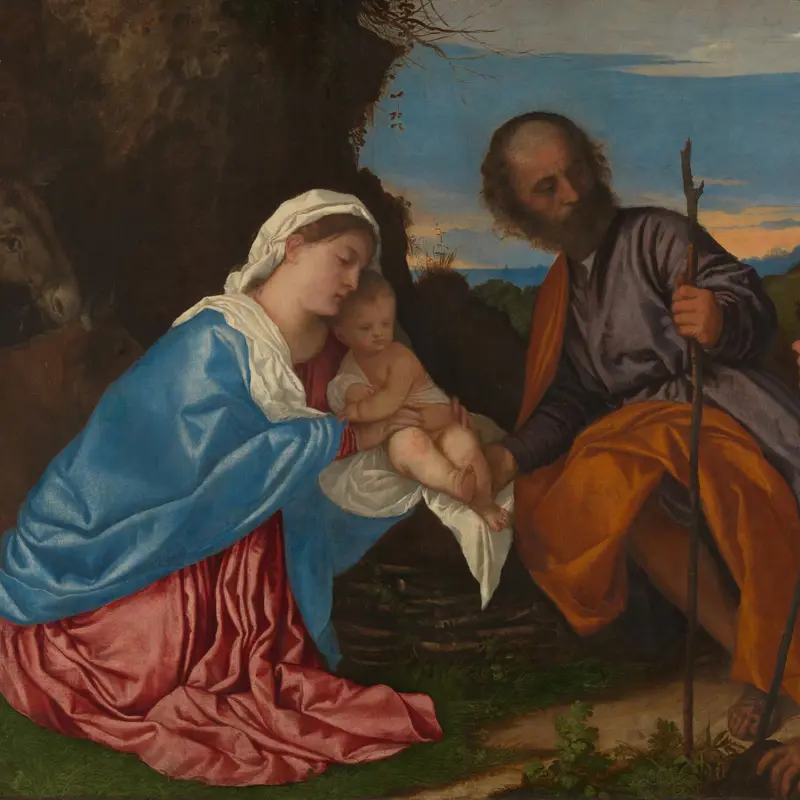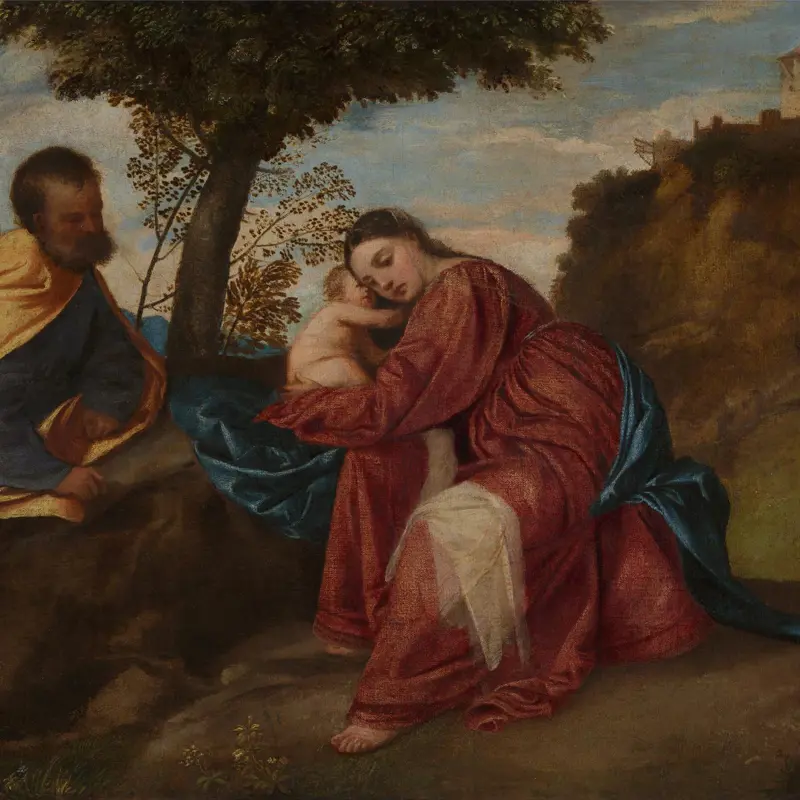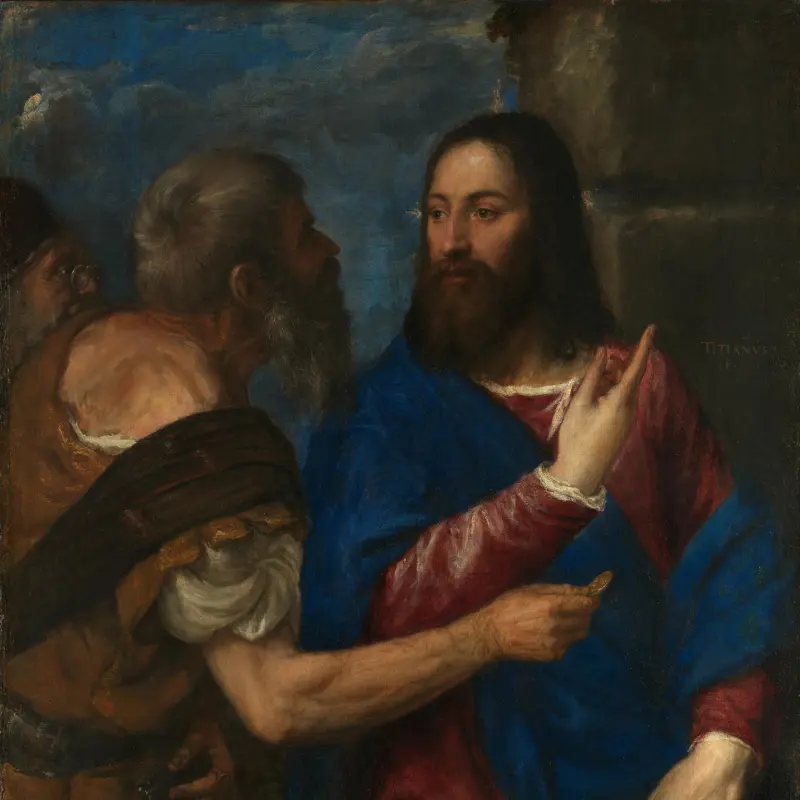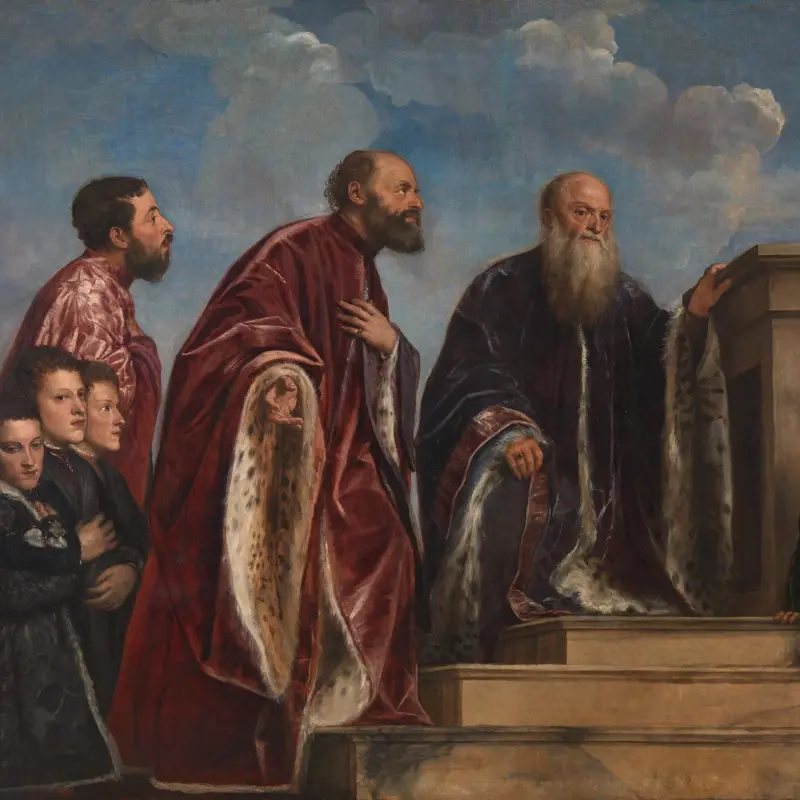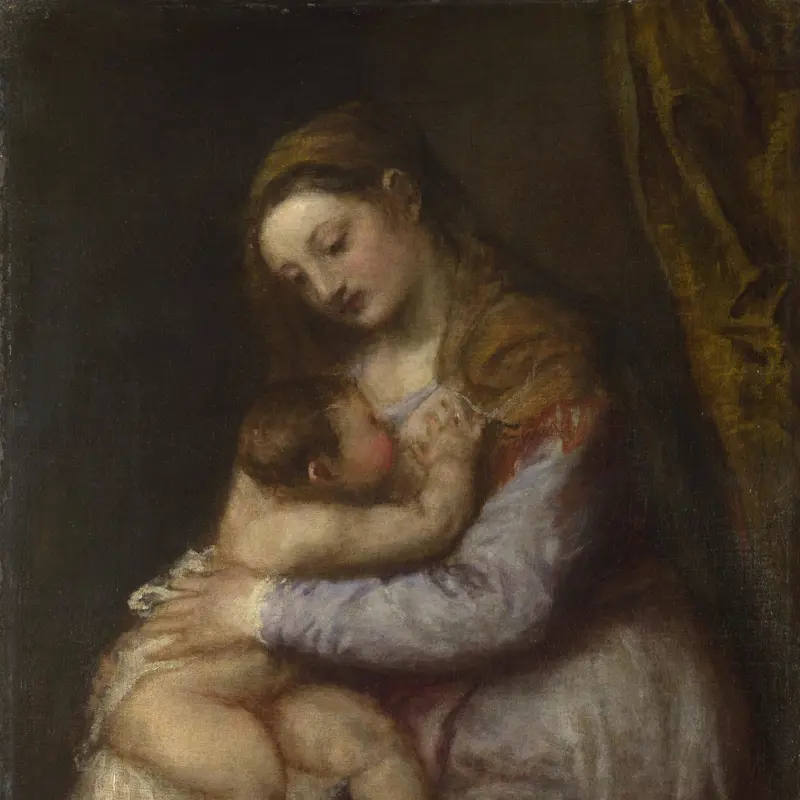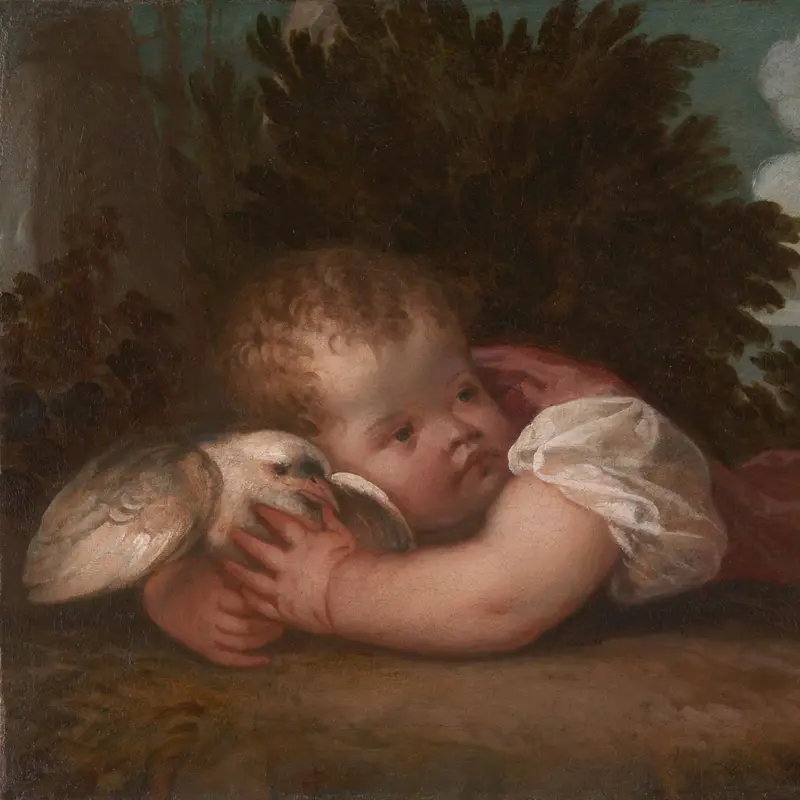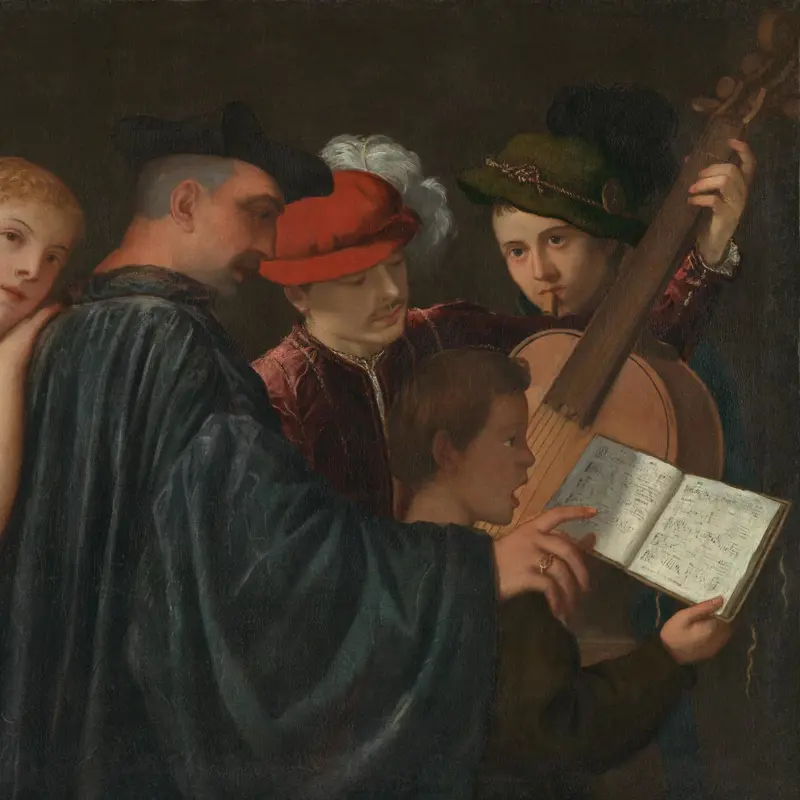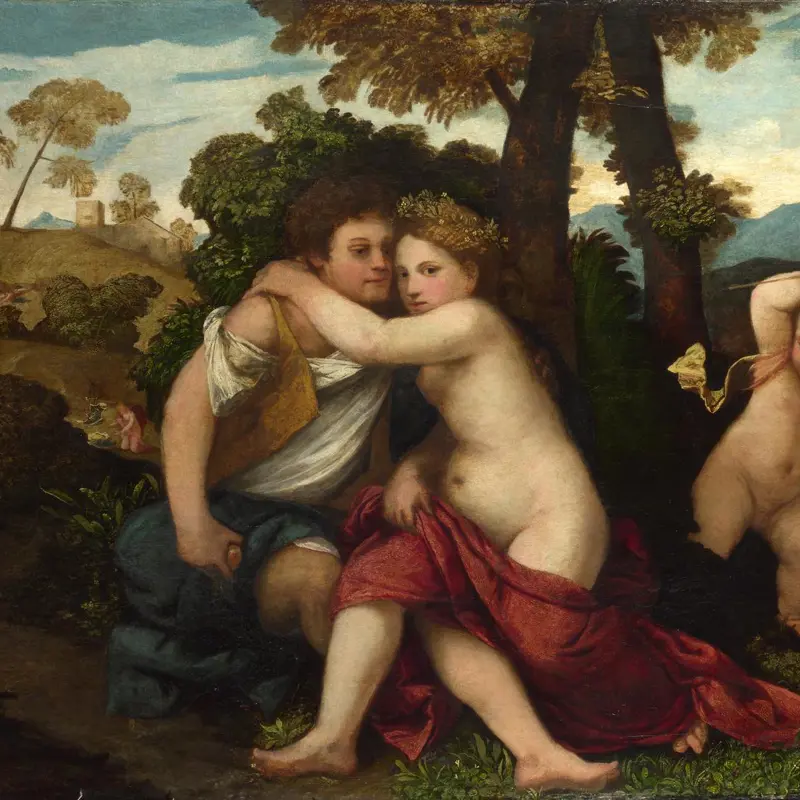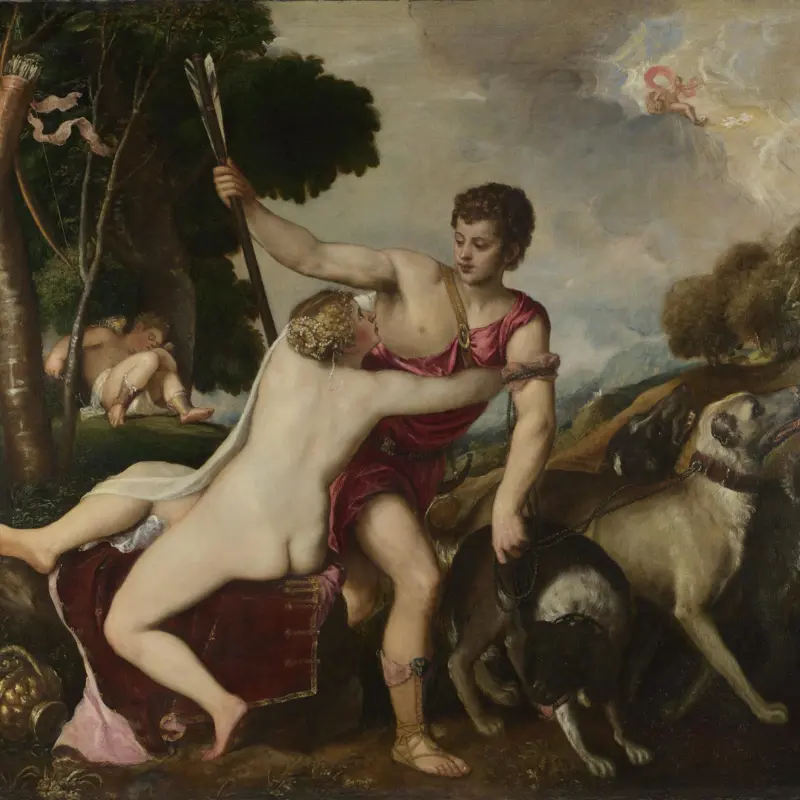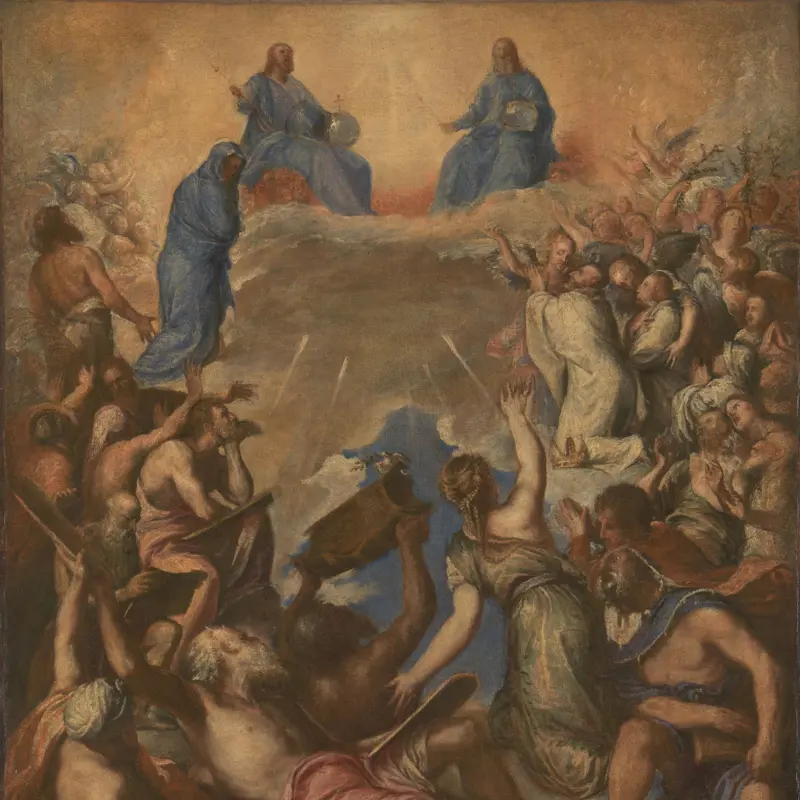Titian, 'Portrait of a Young Man', about 1515-20
About the work
Overview
Following its display in the National Gallery Sainsbury Wing exhibition, Renaissance Faces: van Eyck to Titian, Titian’s 'Portrait of a Young Man' returns to the main floor on long-term loan. The loan will strengthen the Gallery’s exceptional collection of portraits by this Venetian master.
The subdued and elegant portrait provides a fascinating comparison to the National Gallery’s Portrait of Gerolamo (?) Barbarigo. Both portraits show the sitter in three-quarter profile behind a parapet. This format may reflect Titian's knowledge of portrait prints by Dürer.
The pose enables Titian to show off his skill in painting fabrics. He uses broad brushstrokes and subtle tonal variations to convey the density and sheen of the black silk of the sleeve.
The red section of the sleeve is constructed using short, dry strokes to evoke the texture of cut velvet. The young man holds a kidskin glove that he has removed in order to take off his large hat. The fingernails apparent on the empty glove may be the impression of his own, or form part of the design of the glove.
The sitter’s face appears luminous against the dark background of a niche. The strip of classical-style relief sculpture on the left enlivens the gloom of the interior and may allude to the sitter’s tastes. It includes a scrolled tablet with a capital 'C' preceded by another letter which is now illegible. Above this are vine scrolls, a beaked serpent's head and a mask which may be clues to the sitter's identity.
Titian’s careful observation and sensitive portrayal demonstrate why he was so highly sought after as a portraitist. He used the sitter’s features to convey his personality and mood.
The man’s large, pale eyes and pensive gaze suggest that he is contemplative. By contrast his strongly defined eyebrows accentuate his brow, implying intelligence. His long neck conveys his nobility, while his firm jaw is expressive of inner resolve.
Although the man’s identity remains a mystery, Titian’s astonishing naturalism eternalised not just his appearance but also his soul.
Key facts
Details
- Full title
- Portrait of a Young Man
- Artist
- Titian
- Artist dates
- Active about 1506, died 1576
- Date made
- About 1515-20
- Medium and support
- Oil on canvas
- Dimensions
- 92.7 × 70.7 cm
- Acquisition credit
- On loan from a private collection
- Inventory number
- L611
- Location
- Room 8
- Image copyright
- On loan from a private collection, © The Earl of Halifax
- Collection
- Main Collection
About this record
If you know more about this work or have spotted an error, please contact us. Please note that exhibition histories are listed from 2009 onwards. Bibliographies may not be complete; more comprehensive information is available in the National Gallery Library.

